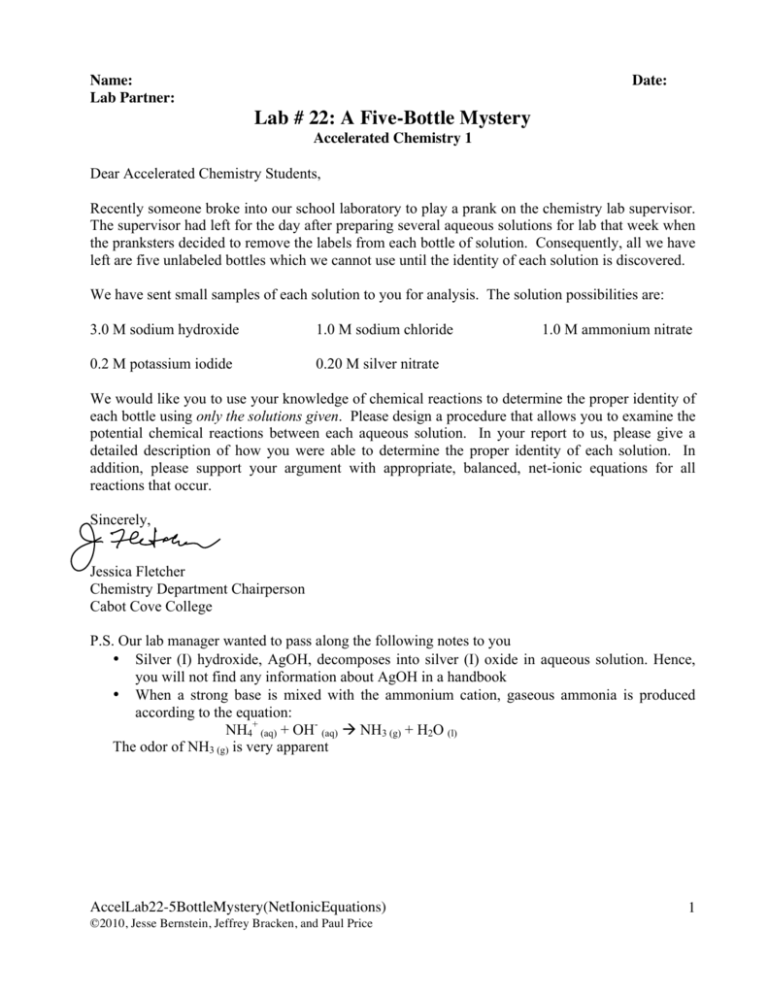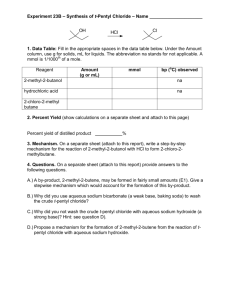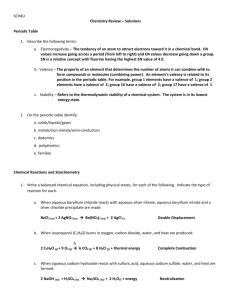Five-Bottle Mystery: Chemistry Lab Activity
advertisement

Name: Lab Partner: Date: Lab # 22: A Five-Bottle Mystery Accelerated Chemistry 1 Dear Accelerated Chemistry Students, Recently someone broke into our school laboratory to play a prank on the chemistry lab supervisor. The supervisor had left for the day after preparing several aqueous solutions for lab that week when the pranksters decided to remove the labels from each bottle of solution. Consequently, all we have left are five unlabeled bottles which we cannot use until the identity of each solution is discovered. We have sent small samples of each solution to you for analysis. The solution possibilities are: 3.0 M sodium hydroxide 1.0 M sodium chloride 0.2 M potassium iodide 0.20 M silver nitrate 1.0 M ammonium nitrate We would like you to use your knowledge of chemical reactions to determine the proper identity of each bottle using only the solutions given. Please design a procedure that allows you to examine the potential chemical reactions between each aqueous solution. In your report to us, please give a detailed description of how you were able to determine the proper identity of each solution. In addition, please support your argument with appropriate, balanced, net-ionic equations for all reactions that occur. Sincerely, Jessica Fletcher Chemistry Department Chairperson Cabot Cove College P.S. Our lab manager wanted to pass along the following notes to you • Silver (I) hydroxide, AgOH, decomposes into silver (I) oxide in aqueous solution. Hence, you will not find any information about AgOH in a handbook • When a strong base is mixed with the ammonium cation, gaseous ammonia is produced according to the equation: NH4+ (aq) + OH- (aq) NH3 (g) + H2O (l) The odor of NH3 (g) is very apparent AccelLab22-5BottleMystery(NetIonicEquations) ©2010, Jesse Bernstein, Jeffrey Bracken, and Paul Price 1 Materials Available: • Five solutions in dropper bottles • Plastic sheet onto which the chemicals are mixed Safety Concerns: Students should wear safety goggles and laboratory aprons throughout this experiment. Students should exercise care when working with the chemicals. Clean up all spills as soon as possible. Students should wash their hands after completing this experiment. Lab Report: Each lab team will be required to submit a lab report containing the items listed below in separate sections as outlined in the Formal Report Requirements: I. Experimental Section II. Results including: Potential Chemical Reactions Show balanced chemical equations with proper chemical formulas and physical states of reactants and products for all reactions. All equations must be numbered and labeled. For any reaction that occurs, write the balanced net-ionic equation. For example: Equation 1: Reaction of Sodium Chloride with Silver Nitrate NaCl (aq) + AgNO3 (aq) AgCl (s) + NaNO3 Ag+ (aq) + Cl- (aq) AgCl(s) Equation 2. Reaction of Sodium Chloride with Potassium Chloride NaCl (aq) + KCl (aq) N.R. Data Tables 1. Data Table showing reactant combinations with detailed observations of the reaction results. 2. Data Table showing the proper identifications of the unknowns. III. Discussion - Discuss how you made each of your identifications using the proper net-ionic equations. AccelLab22-5BottleMystery(NetIonicEquations) ©2010, Jesse Bernstein, Jeffrey Bracken, and Paul Price 2











